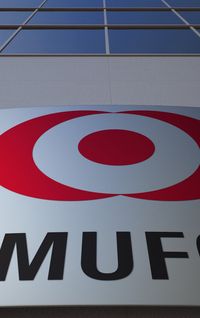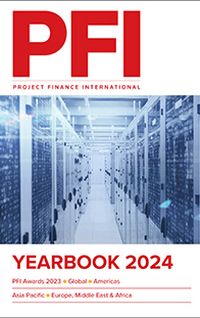On September 28 2023, financial close was achieved for the Hai Long offshore wind farm owned and developed by Northland Power Inc and Mitsui & Co Ltd. By Yuichiro Narita, Mitsui & Co, Daan van Alem, Northland Power Inc and Shilei Huang and Tom White of MUFG Bank.
The Hai Long project breaks new ground for the Taiwan offshore wind sector, being the largest non-recourse financing of a renewable energy project in the region to date and the first Asian offshore wind project to have a revenue profile dominated by corporate power purchase agreements. Securing the financing in challenging market circumstances was a testament to the sponsors, the seven export credit agencies (ECAs) and 15 commercial financial institutions in the financing.
Hai Long project
The project, located 45km–70km offshore Changhua County, Taiwan consists of three offshore wind farms being developed and financed together as a single project: Hai Long 2A (HL2A), Hai Long 2B (HL2B) and Hai Long 3 (HL3). The project secured grid allocation in the April 2018 feed-in-tariff award process for HL2A and the June 2018 auction process for HL2B and HL3. Corporate power purchase agreements were signed for HL2B and HL3 in July 2022.
Sponsors
Northland Power Inc (NPI) and Mitsui & Co Ltd (Mitsui) teamed up in 2018 forming a partnership to leverage NPI’s global offshore wind expertise and Mitsui’s longstanding presence in Taiwan and extensive global greenfield power project track record. The investment in Hai Long is an important component of the sponsors’ respective corporate commitments to supporting the energy transition and development of clean energy portfolios.
As part of NPI’s equity partnership strategy, Gentari International Renewables Pte Ltd is expected to take 49% of NPI’s initial 60% ownership to become a 29.4% shareholder in the project. Gentari will complement the existing shareholders’ expertise by bringing Gentari’s commitment to energy transition in the APAC region, as well as a depth of offshore experience in the region from its parent, Petronas.
The sponsor group also benefits from JBIC’s support through an equity participation in the Mitsui ownership structure. JBIC’s equity investment aligns with Taiwan’s energy transition policy objectives and its own policy-based approach of supporting Japanese companies in the overseas expansion of their infrastructure businesses towards decarbonisation. The sponsors were advised on the financing by MUFG, financial, and Linklaters, legal counsel.
Commitment
Hai Long successfully raised NT$117bn (US$3.6bn) of long-term green loans making it the largest non-recourse financing of a renewable energy project in the region to date. In a market backdrop of uncertainty, the sponsors demonstrated their commitment by transitioning from development to construction with the debt financing process running in parallel in challenging circumstances.
On numerous occasions during the process the sponsors and their advisers were required to react to and structurally address unforeseen developments in order to bring the financing to its successful conclusion. One such example was that the initial bank launch for preliminary credit approval was followed by an onset of construction challenges on a neighbouring wind farm and geopolitical tensions as a result of the visit of US Speaker Nancy Pelosi to Taiwan.
When construction challenges in Taiwan offshore wind precedent projects became apparent, and impacted certain lenders' credit appetite, the sponsors and the financial adviser jointly held a series of roadshow sessions to explain to both international and Taiwan local financial institutions the factors that differentiate Hai Long from other projects.
Support from the ECA group was a key factor in the financing as well. Due to its size, the financing was supported by an exceptionally large ECA group, with seven ECAs from six different countries and four different continents. Export Development Canada (EDC), Japan Bank for International Cooperation (JBIC) and Nippon Export and Investment Insurance (NEXI), UK Export Finance (UKEF), Export Finance Norway (Eksfin), Credendo – Export Credit Agency of Belgium and Export Finance Australia (EFA) participated in the financing.
The ECA group comprises members with varying track records of European and Taiwanese offshore wind experience. For EFA, Hai Long is the first offshore wind project supported in a targeted growth sector for the ECA. For JBIC this is a landmark financing as it is its first offshore wind financing in Asia, to which it brings knowledge and experience gathered in Europe. The ECAs’ commitment to unlocking the next stage of Hai Long’s development and helping drive Taiwan’s decarbonisation process enabled levels of overall ECA cover to be achieved that were unprecedented in Taiwan offshore wind.
Financing
The financing is provided by a diverse group of 11 international and two local Taiwanese banks, as well as two local life insurance companies and a direct loan from JBIC. Funding was committed in both floating and fixed interest rate format and in two different hard currencies alongside New Taiwanese dollars. Within the group of financing parties, several institutions, on both the commercial lender and ECA sides, provided their highest commitments on Taiwan offshore wind to date. Similarly, for three of the commercial lenders this was the first commitment to Taiwan offshore wind.
This is testament to the strength of the sponsor group and in particular their emphasis on embedding experience and lessons learned in their financing and project execution strategy. It also demonstrates that green finance is maturing in Taiwan, with local financial institutions now well-established in offshore wind as well as the onshore renewables markets.
MUFG worked closely with a second party opinion provider for the second time in the Taiwan offshore wind market to help the project secure green financing. With long-term floating interest rate exposure, as well as a wide range of different currency exposures across the construction contracts, a complex hedging strategy was devised and progressively executed by the project and its hedge adviser (PMC) to minimise market impact and optimise hedging costs.
With developers involved in Taiwan’s next wave of offshore wind projects (Round 3) closely following Hai Long’s progress through the development and financing stages, navigating various challenges ranging from macro pressures to geopolitical tensions, to local offshore construction challenges on precedent projects, Hai Long’s successful achievement of the financial close milestone gives a strong signal to the market that Taiwan’s ambitious offshore wind strategy maintains strong momentum. That is to say Hai Long is contributing significantly, both directly and indirectly, towards the achievement of the Taiwan government’s renewable energy target of 15GW of offshore wind to be constructed between 2026 and 2035.
CPPAs
In February 2019 HL2A signed a 20-year power purchase agreement (PPA) with Taiwan Power Company. In July 2022, HL2B and HL3 each signed long-term fixed-price corporate PPAs (CPPAs) with a corporate offtaker. Completion of commissioning is expected to be achieved in 2025–26 for the multi-phase project. Each of HL2A, HL2B and HL3 will commence revenue generation from the date of first power generation of the first WTG or string of WTGs. Consistent with Taiwanese precedent, revenues earned prior to EBL issuance will be accrued and released upon EBL issuance.
Hai Long is the first Taiwanese offshore wind project to feature CPPAs, thereby representing an important step towards the realisation of Taiwan’s ambition of decarbonising industry. HL2B and HL3 will sell their output via fixed-price CPPAs facilitated by the partial deregulation of Taiwan’s electricity market implemented via a package of reforms that enable projects to sell power under CPPAs through the national grid utilising a wheeling service provided by TPC. This is an important milestone for the industry and paves the way for Round 3 developers to further drive innovation in this regard.
Construction strategy
The Project will consist of 73 Siemens Gamesa Renewable Energy turbines (model SG-14.0-222 DD) from the well-established direct drive (DD) platform installed on three-legged jacket foundation structures.
![]()
The Project is being constructed through a multi-contract structure, providing the project with visibility and control. In compliance with Taiwanese localisation regulation, the project’s construction counterparties comprise a combination of local and international contractors that will procure a combination of local and international content. Construction and interface management will be carried out by an experienced and dedicated project team.
![]()
The project’s construction strategy was carefully put together drawing on NPI’s world class offshore wind development experience and Mitsui’s extensive track record in delivering complex greenfield energy infrastructure projects, with close attention paid to lessons learned from observing challenges faced both in Taiwan and global offshore wind.
This led to the integration of a range of enhanced mitigation measures and mechanisms embedded across the development and construction package including in-depth geotechnical investigation, an installation methodology tailored to local conditions, reserving vessels for longer than needed, appropriate contingency planning and scheduling.
The scheduling of the work packages has been specifically designed to introduce appropriate periods of float between the major milestones to ensure that the construction schedule is resilient under a number of highly adverse downside scenarios. The project is scheduled over three installation seasons, which embeds a significant level of natural buffer in the programme.
Hai Long will be the second project in Taiwan to charter the recently built Green Jade vessel, the first and only Taiwan-flagged offshore installation vessel. The operations and management of the project will be supported by a long-term agreement with SGRE for the turbines featuring a robust availability warranty regime. A comprehensive framework has been developed for balance of plant O&M.
By the time Hai Long reached financial close, the project was already significantly de-risked, as early works and fabrication of key components had already started. Currently, the Hai Long team is focusing on port quay preparation, onshore substation construction, procurement of major components, etc, and overall construction works are progressing. Execution of Hai Long, on-time and within budget, is a key priority for the sponsors. As a result, the project is well on its way to deliver power equivalent to the demand of more than one million households in 2026.
![]()
To see the digital version of this report, please click here.
To purchase printed copies or a PDF of this report, please email leonie.welss@lseg.com














